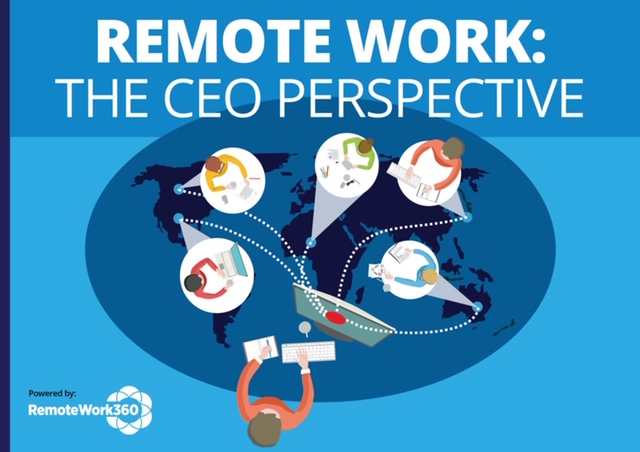Remote Work Conundrums: Work-life balance .V. Flexible Hours
- Home
- Supplier Directory
- Attendance & Monitoring
- Collaboration & Communication
- Cloud Telephony & VOIP
- Collaboration & Secure File Sharing
- Communication Software
- Creative Tools
- Culture Building
- Interactive presentations/screen sharing
- Messaging Tools
- Online Training
- Productivity
- Project Management
- Shared workspaces
- Time Tracking
- Video Conferencing
- Virtual Water Cooler
- Web Developer tools
- Finance/Accounting
- HR/Talent Management
- IT
- Managing Remote Teams
- Productivity
- Project Management
- Remote Workplace Wellness
- Sales & Marketing
- eNewsletter
- Events / Education
- About Us
- News
Feature, HR/Talent Management
ByHeidi Williams
Work-Life Balance Versus Flexible Hours – Getting the Balance Right for Remote Workers
Earlier this year, PWC’s Remote Work Survey indicated that employees had 4 key requirements to help them be more productive as they continue to work remotely:
- Greater work hour flexibility – over half of respondents indicated they wanted more flexibility over when their hours were completed.
- Better hardware and equipment – for example, laptops, chairs, monitors – employees felt their home-working equipment needs weren’t being sufficiently met
- Clearer rules, standards and expectations – for example agreeing a standard of responsiveness and core “rules of engagement” for remote working
- Help managing workloads – the “always on” mode of home working has battered mental health, remote workers want this to be more actively addressed
4 oft-repeated over-arching themes which circle the debate, on getting remote work right.
Conflicting Priorities
But what’s interesting is how these 4 components clash up against each other in different ways. Workers want to be able to work flexible hours – for some this may simply mean starting and finishing an hour later, for others taking an extended lunch break to play sports whilst others still, prefer to burn the midnight oil and get their work done through the night. Yet, they also want to have clearer rules of engagement – when collaborating asynchronously, how long is it acceptable to be waiting for a response from your latest request? Should there be a fixed time at which all employees are working, to create a core overlap and help increase efficiency by working more instantaneously on a project together? Creating flexible, individually tailored schedules can be at odds with creating clear rules and expectations – particularly with regard to response times, frustration over which is the bane of any office worker’s life.
Achieving a Balance
Getting this right, is such a fine balance – to create greater work-hour flexibility, you potentially impact on some of the rules of engagement in terms of times of responsiveness etc, especially when you add in time differences which means workers may already be out of synch by 8 hours or more, let alone the fact that they’re then not in the office for a further 5 hours because they “do their best work in the evening”. Likewise, the “always on” mode is a real concern for remote workers but is, to some extent, a byproduct of wanting to carve out flexible hours which don’t necessarily align with another worker’s flexible hours, so you end up having to plug back in to catch up on things that weren’t achieved when both living your own dreams. To boot, the newness of remote work, for many, also creates that pressure to “prove” that you’re still effective, valuable, productive and committed. Not being in the office and having face-time with managers can mean employees seek to prove their worth through sheer volume of “on-ness”, by being immediately responsive and available 24-7.
Walking The Walk Not Just Talking The Talk
The solution of course, is striking a balance. But, more specifically, it’s in striking a balance but then communicating, living and perpetuating that balance throughout the business. Fully remote companies, like Gitlab, are known to be incredibly thorough at documenting their work-culture, their processes, their ethics through a detailed handbook. Their remote work rules aren’t a set of 10 commandments but an entire way of working, which is deeply embedded in their organization and is “lived” by all their employees. Non-remote businesses need to look to these examples and learn from them, and to be deliberate and intentional in setting clear boundaries, rules, degrees of flexibility and expectation levels – which aren’t just stated, but which filter down through the entire business day to day.
Stubborn on Vision, Flexible on Details.
So take heed of PWC’s 4 key requirements, but take time to work through the non-negotiables in your business, the concessions that start to create frustration because they impact on your remote workers ability to get their jobs done. This is not a one-size-fits all approach, but equally be cautious of creating different set-ups across business divisions which in turn can lead to resentment. Creating a clear, documented remote work policy is an important first step – and something we’ll be providing additional support with over the coming weeks – sign up to our newsletter here if you need help with your remote work policy, or if you want to stay abreast of the latest tech, tools, solutions and insights around remote work.
Don’t lose sight of your vision, but be prepared to be flexible on some of the details around getting there.
Related Posts
An estimated 86.3% of San Francisco employees are working from home, the highest rate among 10 major ...
May 11, 2021
In the third instalment of her blog - you can catch the first, on maintaining creativity here and ...
January 22, 2021
The different “kinds” of remote: finding the right fit your business Covid-19 has turned our world ...
January 14, 2021
RemoteWork360
RemoteWork360.com is powered by Chief Executive Group, which exists to improve the performance of business leaders, build communities and strengthen society.
Latest Insights
COPYRIGHT ©2020 REMOTEWORK360. ALL RIGHTS RESERVED.



